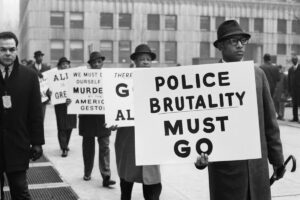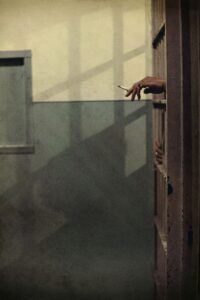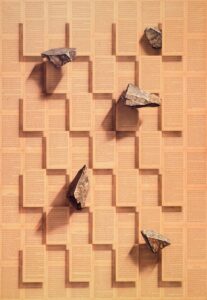I visited two virtual exhibitions, “Gordon Parks: A Choice of Weapons” and “Korean Modern and Contemporary Art – Since the late 1970s.” “Gordon Parks: A Choice of Weapons” by the Gordon Parks foundation was located in the Howard Greenberg Gallery in New York during October 7th to December 23rd, 2021. This exhibition was dominated by black and white photography and the subject were all sorts of situations African Americans lived through and found themselves in because of race discrimination, social justice and other issues in America. Google’s Arts & Culture virtual exhibit called, “Korean Modern and Contemporary Art – Since the late 1970s” was provided by the National Museum of Modern and Contemporary Art which is located in Seoul, Korea. It features many Korean contemporary art works and shows an evolution of Korean art during a 120 years period from hyperrealism art to intriguing photography.

I will start by talking about a photograph by Gordon Parks that is Untitled and from New York, New York. Photographed in 1963, it is a black and white photograph or a gelatin silver print, and the dimensions are 11 3/4 x 17 3/4 inches. The photo mainly shows multiple African American men in a diagonal line, in the photograph’s framing, holding protest signs all relating to police brutality. This photograph is representational rather than abstract. I chose this photograph to discuss because I found it timeless because the image was black and white and it’s the topic it presents which is still relevant till this day. The diagonal composition is also very interesting because it makes these people look like they are coordinated and almost like they are marching together.

Then, I chose another Gordon Parks photograph that is also Untitled but is from Chicago, Illinois and photographed in 1957. It is an archival pigment print and its dimensions are 20 x 16 inches. This photo shows a POV of a jail with the jail cell door shown from the side. Only a sliver of it is shown on the far right boundary of the photo. There is also a prisoner’s hand sticking out of the jail cell bars holding a cigarette and wearing a ring. I chose this photo to analyze because it was interesting how the photo was taken at an angle that doesn’t show inside the jail cell and therefore not revealing the prisoners identity as well. I think that this photo shows just enough of a glimpse into this person’s situation in an impactful and thoughtful way. You can see the color of the wall but more importantly, the color of the prisoners skin. This mixed with when and where this photograph was taken will lead the viewer to realize how this prisoner might have gotten here in this situation.

Then finally I chose a painting from the Korean art exhibition titled Stone by Ko Younghoon. Made in 1985, this painting’s medium is oil on paper and is 142cm x 98cm. This painting showcases beige pages with English written in them and gray stones painted on them. Some of the pages are offset and therefore cast a shadow and so do the stones. They all seem to suggest the light source being from the north east side of the painting. This painting is part showcasing hyperrealism because it’s a really realistic photo-like representation of stones scattered around and pages of books with English literature on them. I chose this painting because at first I thought it was a sculptural piece of art and yet when I took a look at the information about it, I found out that it was a hyperrealistic painting instead. I think that the use of shadows paired with the hyperrealism style really gives a effective illusion of depth that isn’t really their and that for example lead me to believe it was sculpture to begin with
Overall, all of these works are really intriguing and I have a really positive opinion of all of them.
I feel like a virtual exhibit isn’t as immersive of an experience as a physical exhibit visit, especially when it comes to paintings and sculpture, because you can physically see the textures of it all when you yourself are in front of the art. However, with photography it works just as well to see it virtually vs in person in my opinion. Sometimes in the virtual exhibits, the artwork is not photographed or scanned close up and shown but rather is shown from afar where it is on a wall. That makes it difficult to see some art works. Both ways of viewing an exhibition are really informational because of the captions that go along with each work really explaining the context of any given work. Overall I believe that a visit to an exhibit physically would be a more engaging and immersive experience.




